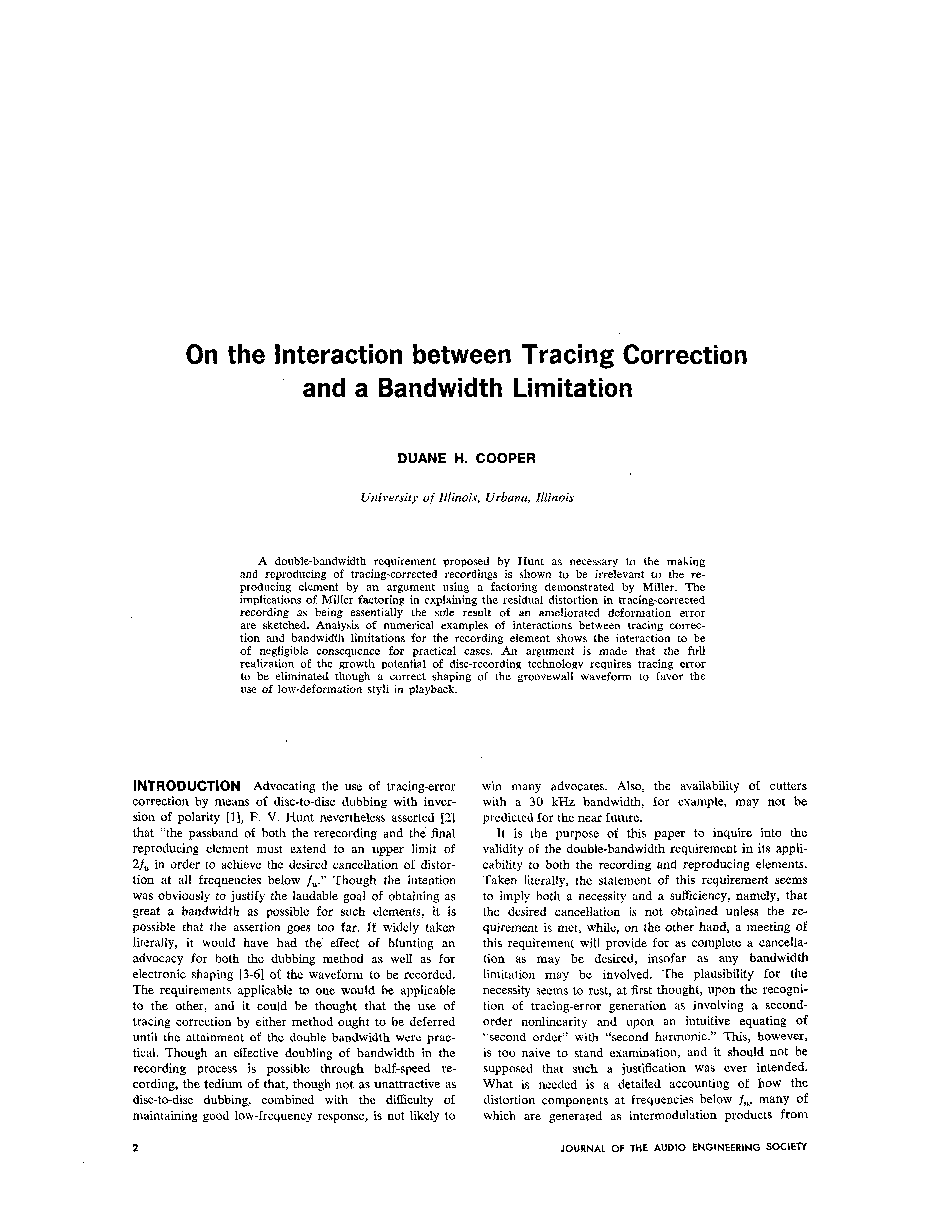Home / Publications / E-library page
You are currently logged in as an
Institutional Subscriber.
If you would like to logout,
please click on the button below.
Home / Publications / E-library page
Only AES members and Institutional Journal Subscribers can download
A double-bandwidth requirement proposed by Hunt as necessary to the making and reproducing of tracing-corrected recordings is shown to be irrelevant to the reproducing element by an argument using a factoring demonstrated by Miller. The implications of Miller factoring in explaining the residual distortion in tracing-corrected recording as being essentially the sole result of an ameliorated deformation error are sketched. Analysis of numerical examples of interactions between tracing correction and bandwidth limitations for the recording element shows the interaction to be of negligible consequence for practical cases. An argument is made that the full realization of the growth potential of disc-recording technology requires tracing error to be eliminated though a correct shaping of the groovewall waveform to favor the use of low-deformation styli in playback.
Author (s): Cooper, Duane H.
Affiliation:
University of Illinois, Urbana, IL
(See document for exact affiliation information.)
Publication Date:
1969-01-06
Import into BibTeX
Permalink: https://aes2.org/publications/elibrary-page/?id=1611
(1500KB)
Click to purchase paper as a non-member or login as an AES member. If your company or school subscribes to the E-Library then switch to the institutional version. If you are not an AES member Join the AES. If you need to check your member status, login to the Member Portal.

Cooper, Duane H.; 1969; On the Interaction between Tracing Correction and a Bandwidth Limitation [PDF]; University of Illinois, Urbana, IL; Paper ; Available from: https://aes2.org/publications/elibrary-page/?id=1611
Cooper, Duane H.; On the Interaction between Tracing Correction and a Bandwidth Limitation [PDF]; University of Illinois, Urbana, IL; Paper ; 1969 Available: https://aes2.org/publications/elibrary-page/?id=1611